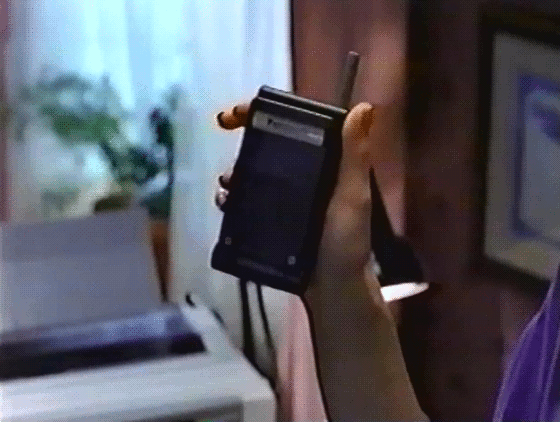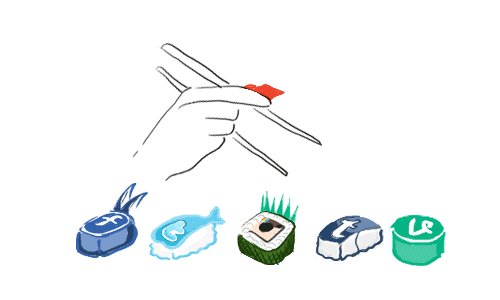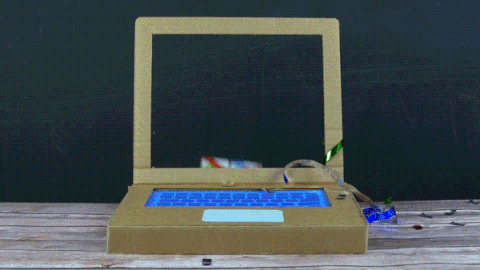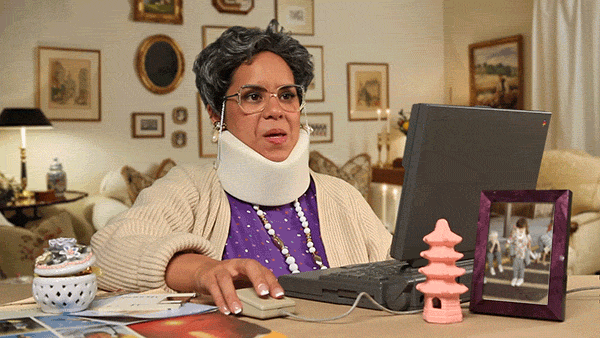Though it’s not the most important part of a business, all brands need to sell in order to keep their doors open. Of course, you can’t sell to everyone. which is why it’s important to define your target market first.
Every good marketer knows that casting a wide net is futile; creating a few buyer personas to identify your highest-converting audience allows you to be more specific and engaging with your strategy—from the timing of your messaging to its content.
Whether your target market is Gen Z, millennials, Gen Xers, or baby boomers, it’s important to know how they use technology in order to build an effective strategy and convert them into loyal customers.
To achieve this, we’re going to explore some data on the following topics (plus key takeaways for each)—if you have an itch to skip ahead, the sections are as follows:
- Device preferences
- Tech usage & content consumption
- Preferred social channels
- Time spent online
- Brand engagement
- Purchase journey
- Purchase preferences
But first…
Here is the age breakdown of each generation we’ll be analyzing:
- Gen Z: 0-21 years old
- Millennials: 22-37 years old
- Gen X: 38-53 years old
- Baby boomers: 54-72 years old
Now, onto the real juicy data!
Device Preferences

1. 57% of baby boomers use tablets compared with only 35% of millennials. (Nielsen)
2. 4 in 10 baby boomers own smartphones—that’s an increase from 18% in 2013 to 42% today. (Pew Research Center)
3. Over 25% of millennials use a mobile phone as their primary source for content compared with 17% of Gen Xers and 7% of baby boomers. (BuzzStream x Fractl)
4. 65% of baby boomers own a desktop computer and 49% own a laptop. (BrainBoxol)
5. 92% of Gen Xers own a cellphone, 69% own a desktop computer, 61% own a laptop, and only 5% own a tablet. (BrainBoxol)
6. 70% of millennials own a laptop compared with 57% who own a desktop, making them the first generation to be more likely to own a laptop overall. (BrainBoxol)
7. 98% of Gen Z owns a smartphone; they also expect to get their first smartphone younger than any other generation. (GlobalWebIndex / BrainBoxol)
8. 52% of Gen Z reports that their smartphone is their most important internet device. (GlobalWebIndex)
9. 88% of Gen Z reports having access to a desktop or laptop computer at home. (PRC)
Why you should care
The most important takeaway here is that all the age groups have mostly multi-device users—in other words, not a single generation is significantly behind on the times. Sure, baby boomers don’t depend on their mobile devices more than oxygen like Gen Z does, but almost half of them are still smartphone-savvy. This means that your marketing messaging and touchpoints have to consider how your customers interact with your brand on all devices, from your smartphone-exclusive Gen Z kids to the surprising superfans of tablets, the baby boomers. For instance, while you may text offers to your customers if they skew younger, you’re more likely to effectively reach older audiences with an email promotion instead.
Tech Usage & Content Consumption

10. ⅔ of baby boomers use the internet and half of them have broadband at home. (PRC)
11. Only 26% of internet-using baby boomers say they feel very confident when using electronic devices to do the things they need to do online. (PRC)
12. 28% of baby boomers report having some kind of health problems, disabilities, or handicaps that keep them from doing certain activities—as a result, they report being less likely to use a variety of digital assets and devices such as the internet and smartphones. (PRC)
13. 1 in 4 baby boomers say they play online video games. (PRC)
14. Only 27% of millennials follow the news, compared with 46% of Gen X and 61% of baby boomers. (PRC)
15. Gen Xers are the most likely to get their news from websites or apps, millennials are most likely to get it from social networking sites, and baby boomers are most likely to get it from local TV. (PRC)
16. 57% of Gen Z uses messaging apps at least half the time they use their phone. (BrainBoxol)
17. 97%, or almost all millennials say they use the internet. (PRC)
18. 28% of millennials are smartphone-only internet users and do not have traditional broadband service at home. (PRC)
19. 18% of Gen Xers go online primarily via smartphone compared with 13% of baby boomers. (PRC)
Why you should care
While all generations use the internet significantly more than years before, each has a different purpose or method for doing so. For instance, if you’re writing content for older audiences, a company blog that helps your audience keep up with your industry’s news will be more helpful to them than it would be to Gen Z. On the flip side, sending direct, customized messages to engage your audience will resonate more with a younger audience than older ones. One of the key aspects to consider for customer experience purposes is accessibility: while Gen Z was practically born phone-in-hand, nearly a third of baby boomers struggle with a physical barrier to adopting more technology into their daily lives. What does that mean for your brand? While everyone is seemingly more tech-savvy these days, if you’re marketing to older generations, you have to optimize your content and channels for accessibility—whether that entails including alt text, using a lot of imagery, improving readability on your site, or otherwise.
Preferred Social Channels

20. Gen Xers are heaviest social media users of any demographic group, with 34% of the demographic using it compared to 69% of the total adult population. (Nielsen / PRC)
21. 70% of baby boomers who use Facebook report that they log into the platform on a daily basis. (PRC)
22. Facebook is the most popular platform for sharing content across all generations, with 51% of Gen Z, 62% of millennials, 58% of Gen X, and 63% of Baby Boomers using it most often out of all social media. (BuzzStream x Fractl / PRC)
23. Google+ and LinkedIn are the most popular platform for baby boomers for sharing content; YouTube and Twitter are the most popular sharing platforms for Gen X; Tumblr, Instagram, and Pinterest are the most popular sharing platforms for millennials. (BuzzStream x Fractl)
24. 30% of millennials engage with a brand on social media at least once a month. (Sprout Social)
25. 15% of Gen Z uses Instagram, 32% uses YouTube, and 35% uses Snapchat. (PRC)
Why you should care
Maybe you’ve heard this already, but word on the street is that “Facebook is for old people.” Harsh? Yes. Untrue? Partially—while every generation is on Facebook technically, it’s the older generations who are also there actively. As a marketer, you need to do your thorough research and pick a few channels where you know your ideal customers are; here, guesswork is costly in terms of efficiency. Personally, I’ve chatted with some Gen Z kids who told me they’ve purchased products advertised on Snapchat because the ad was timely, relevant, and engaging. Meanwhile, I find myself getting sucked into an Instagram ad since I’m a millennial and prefer that image- and product-heavy browsing experience to the others. There’s no point in casting a wide net and advertising on all social media platforms; instead, your budget is better spent on targeting your audience by their favorite channel to guarantee better engagement.
Time Spent Online

26. Gen Xers spend about 21 hours per week on their smartphones while millennials spend 19 hours. (Nielsen)
27. Over 25% of baby boomers consume 20 or more hours of content each week. (BuzzStream x Fractl)
28. Gen Xers spend more time per week on all devices—21 hours on smartphones, 9 hours on PCs, and 4 hours on tablets—than millennials do. (Nielsen)
29. 60% of Gen Xers use a smartphone daily and 67% use a laptop or PC daily, surpassing the 58% of millennials who use laptops or PCs daily. (Centro)
30. 76% of smartphone-owning baby boomers use the internet at least several times per day. (PRC)
31. 45% Gen Z says they’re on their phone “almost constantly;” 61.8% of Gen Z and millennials say they would rather leave their wallet at home instead of their phone. (PRC / LivePerson)
32. 44% of Gen Z says they go online several times a day, so in total, 90% of Gen Z goes online at least multiple times per day. (PRC)
33. ¾ of internet-using baby boomers go online daily and nearly 1 in 10 go online almost constantly. (PRC)
34. 40% of baby boomers consume most of their content in the morning; they are online between 5am and noon. (BuzzStream x Fractl)
35. Less than 10% of each generation reports consuming content late at night, or between 12am-5am. (BuzzStream x Fractl)
Why you should care
It’s easy to assume that, the older the generation, the less they frequent their favorite parts of the internet, but the data tells a different story. Who knew that Gen Xers were second-most addicted to browsing the web after Gen Z? The key marketing insight to pull from this data is that, depending on the generation of your ideal audience, you have a different amount of engagement opportunities per day. Your best bet at reaching baby boomers is sending out messages or sharing content in the morning when they’re up early and starting their day with some casual browsing. Gen Z, on the other hand, provides a constant opportunity to be reached and engaged; however, this can add a challenge of making sure that your marketing efforts don’t get drowned out or forgotten amidst the higher frequency of browsing, channels, and content. As always, testing the timing of your content sharing or customer outreach is the best way to find out when your audience is ready to consider your brand for a purchase.
Brand Engagement

36. 38% of millennials follow brands on social media for entertainment value. (Sprout Social)
37. 41% of Gen Xers follow brands on social media for contests; 58% follow brands for deals and promotions. (Sprout Social)
38. 60% of baby boomers follow brands on social media for a mix of deals and promotions; 53% follow brands for information. (Sprout Social)
39. Gen Xers are 160% more likely than other generations to unfollow a brand that says something offensive or that is in opposition with their beliefs. (Sprout Social)
40. 21% of millennials unfollow brands because of having a bad experience; 22% unfollow because they found a brand’s social marketing to be annoying. (Sprout Social)
41. 29% of baby boomers will unfollow or opt-out of marketing when there’s too much spam. (Sprout Social)
42. 70% of Gen Xers, 60% of millennials and 51% of baby boomers will likely purchase from a brand they follow on social media. (Sprout Social)
43. 58.9% of millennials, 50.4% of Gen Xers, and 55% of baby boomers all follow brands on social media before purchasing from them. (Sprout Social)
44. Millennials are twice as likely as other generations to turn to social (instead of phone or email) to communicate with a brand. (Sprout Social)
45. More than 60% of people from all generations who follow brands are willing to buy from them. If the brand invests in organic engagement through 1-on-1 conversations and positive interactions, the number goes up to 69%. (Sprout Social)
46. Millennials are 6% more likely than other generations to purchase from a brand that they’ve had a positive exchange with on social media. (Sprout Social)
47. Gen Z is almost 50% more likely than millennials to write a product review in exchange for loyalty points from a brand. (CrowdTwist)
48. 68% of Gen Z says they prefer to receive communication from a brand via email. (Adestra)
49. 79% of Gen Z would engage with a brand that could help them make a difference. (Saatchi NY)
50. 60% of Gen Z prefers to shop at retailers that engage with them via social media. (Interactions Marketing)
51. 69% of Gen Z finds advertisements to be disruptive. (Vision Critical)
Why you should care
Depending on the generation, your messaging needs to serve a different purpose: younger generations seek entertainment or personal communication from brands; older generations seek brand information and deals instead. Across the board, however, social media is a promising channel for engaging all generations as they each use it with the intention of interacting with brands in one way or another. As advertising loses its touch, be careful not to turn off your audience by relying on the old way—the younger generations are easily turned off by overly promotional messaging and will even hit the dreaded “unfollow” button without hesitation if they’re fed up. Take the data above and create a strategy with it in order to get the most social engagement with your audience—after all, it’s more likely to turn into a purchase that way.
Purchase Journey

52. 60% of baby boomers are looking for promotions on social media. (Sprout Social)
53. 85% of baby boomers research products on their web browsers. (Synchrony)
54. 12% of baby boomers look to friends and family for advice on their purchases. (Colloquy) For millennials, the number goes up to 60%. (Gen Buy)
55. 68% of millennials demand the convenience of omnichannel accessibility during their shopping journey. (Accenture)
56. Younger millennials are more likely to shop in a physical store compared to older millennials. (CouponFollow)
57. 82% of millennials say that word-of-mouth is a key influencer in their purchase decisions. (Synchrony)
58. 90% of millennials research product reviews online before making a purchase. (Synchrony)
59. 73% of Gen Z would make a purchase based on a social media recommendation. (Retail Assist)
60. 45% of Gen Xers use their phones to look for a better price or other options on a product while shopping at a retail store. (BrainBoxol)
61. 41% of baby boomers, Gen Xers, and millennials all say they practice “showrooming,” where they browse for items in-store and then find the lowest price online to purchase, more than they did a year ago. (Accenture)
Why you should care
How your ideal audience determines that your brand is the one they’re going to buy from is paramount. Luckily, we live in an era where all the data is available to us marketers so that we can make strategic, calculated decisions in how we help our customers choose us over the competition. For instance, a brand that doesn’t have a website is guaranteed to lose out with all but Gen Z—after all, the physical storefront now serves mainly as a place to sample a product before virtually hunting for a deal on it. Because consumers nowadays trust their peers more than brands, your strategy should try to leverage user-generated content (UGC) and word-of-mouth marketing (WOMM) in order to increase your chances of gaining their attention and loyalty. Also, consider how you can make it easy for customers to shop on any device, pull up discounts in-store, and overall make the lines between digital and physical nonexistent to reduce friction in their purchase journey.
Purchase Preferences

62. 66% of baby boomers make regular purchases on web devices. (Immersion Active)
63. Baby boomers make almost 50% of retail sales compared with only 10% from millennials and 20% from Gen X. (Synchrony)
64. Shopping at a retailer with a “social conscience” is important to about 67% of people in all three generations. (Synchrony)
65. Only 27% of baby boomers think that shopping is a great way to relax, and 37% report that they would be willing to explore a store for new products. (Colloquy)
66. 84% of baby boomers prefer to shop in-store. (Colloquy)
67. 67% of baby boomers report that if an item they want is available online or in a nearby store, they prefer to purchase in-store. (TimeTrade)
68. Only 16% of millennials make the majority of their purchases on a mobile device. (CouponFollow)
69. 84% of Gen Z makes shopping a social activity, such as part of their day out on the town. (Retail Assist)
70. 58% of Gen Z prefers to make purchases in stores rather than online. (Retail Assist)
71. 68% of millennials demand an integrated, seamless shopping experience regardless of the channel. (Accenture)
72. 39% of millennials, 33% of Gen Xers, and 24% of baby boomers use mobile payments when shopping, paying bills, or sending or receiving money. (Pew)
73. Millennials use PayPal the most out of all the generations, with 32% of surveyed millennials using the payment service compared with just 15% of Gen Xers and baby boomers combined. (PaymentEye)
74. Only 13% of baby boomers still write checks; instead, about 90% use debit cards to make payments. (Federal Reserve)
75. 75% of Gen Z would rather shop at a retailer that accepts mobile payments over one that doesn’t. (Interactions Marketing)
Why you should care
Cash money is becoming increasingly more rare—remember those fancy silver dollars that are more like collector items than currency these days? If your audience skews younger, they may not even have a wallet on them at all and expect a mobile pay option. This is where having the flexibility of allowing customers to pay on their phones or place orders online with free in-store pickup helps a lot of retailers stand out from their competitors. Unlike the stereotypes may imply, it’s actually the older generations who prefer to shop fully online while Gen Z kids are blissfully browsing brick-and-mortar stores for fun. Rather than going with your gut, use this data to determine where and how your target audience is most likely to make a purchase in order to increase your chances of getting their business.
The Bottom Line

While each generation has some traces of similarity to the next, they really are quite separate in their preferences across the board. From their devices of choice to how they browse products, it’s crucial to identify who prefers what to really make the most of your marketing strategy and create the happiest of customers.
After all, if you nail the customer satisfaction by going above and beyond, your best customers may become brand advocates, helping to further your brand’s success as a result.
If your ideal audience consists primarily of millennials, we happen to be fascinated by the rambunctious bunch, so check out our big list of millennial statistics, how to market to millennials, and an in-depth look at how they behave as consumers to learn even more. I promise this: by the time you get through all that, you’re going to know millennials inside and out better than they know themselves.
Which stats did you find the most surprising? Is your target audience the type of digital consumer you thought they were? Share your thoughts below!




